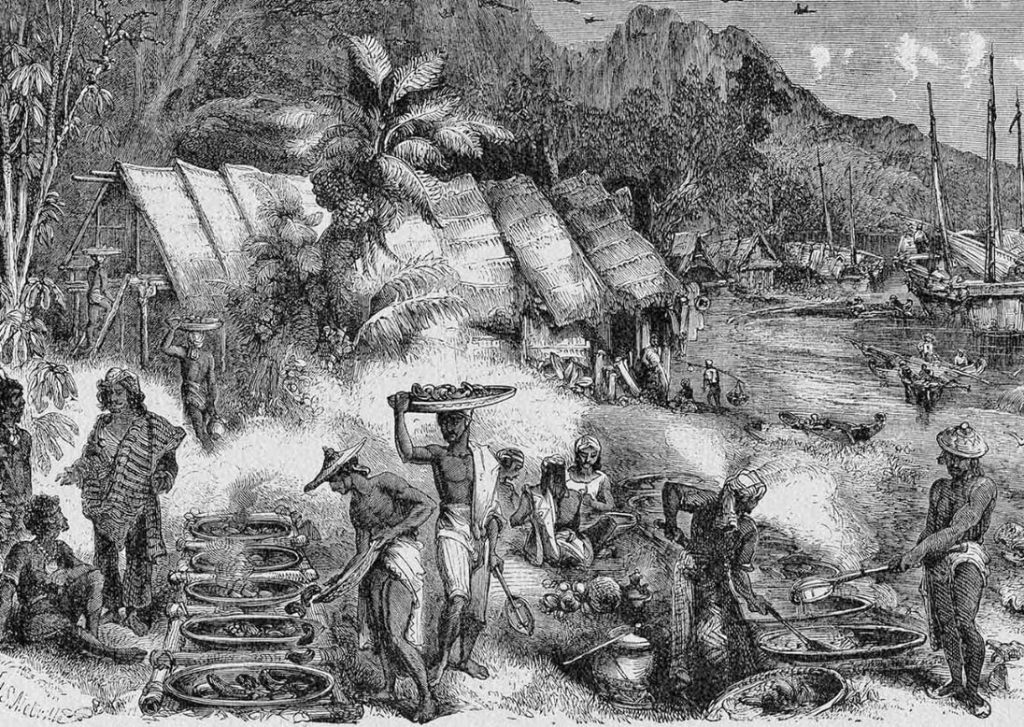
Dr Dzavid Haveric
The story of Islam in Australia is also the story of the mosque (masjid) which is a living testimony to Islam’s roots in the history of the continent. Before the historical arrivals of the Afghans in Australia’s inland, there was for centuries also the comings of the Macassans on its islands and shores. Travelling to Australia, they intoned their daily prayers on their boats, ‘floating mosques’, wherever they sailed. However, the early Macassan Muslim missionaries left no written records in Australia. Their message was by word of mouth, or ‘bamboo note’ written on the sand, which was blown by the wind and did not leave a trace of a mosque.
If we are really curious to know more about an unknown Islamic history, in particular the history of mosques in Australia, then the main question is: did Macassan Muslims, if they were Muslims (and they certainly were) pray and where were their congregations? Should we, however, ask ourselves if there were mosques before the arrival of the Afghan settlers? Do we really have to believe that Macassan mosques existed in the past only if we had seen or found it?
Well, we don’t need to go into the space to believe that a space exists. We don’t have to go into the past to understand the slightest logic that directs us to think about the Macassan mosque. For instance, a simple logic suggests, a bird flew over the ocean that no one noticed it, a bee landed on a flower that no one saw it, an elephant stepped on an ant which also remained unknown – yet all that happened. And by the following this logic we believe so.
Hence, more interested Muslims may find a logic that mosques could have been built much earlier in Australia’s history. However, this view has to be beyond the ‘standard’ cliché that the mosques were built from the end of the 19th century by Afghan cameleers. With the arrivals of Macassan fishermen, came prayers, rituals, holy texts, Arabic words – aspects inseparable from Islamic life, because if it weren’t for that, the Aboriginals would not have known them as Muslims. In the golden age of Islamic civilisation, wherever the Muslims went by the 15th century or earlier; either to the Middle East, Europe, China, Africa, Americas, Siberia or Australia, they had their congregations, tents and makeshift mosques. Some were temporary mosques which must have existed even outside the ‘Islamic World’, such as Australia.
These Macassan mosques in Australia were presumed fragile ‘huts’ within the fishing camps, deep in anonymity, which preceded the mosques known in historical records. Built obscurity, these mosques assumed something antiquated and almost marvelous which didn’t find their way into history books. Macassan arrivals in Australia were not only for fishing and trade but also for cultural-religious interactions with the natives, including the introduction of their ‘hut’ mosques.
The Macassan mosques in Australia were small prototypes of those built on the Indonesian Archipelago. They may be called ‘bush hut mosques’ or ‘seashore mosques’ as they were built in remote coastal places on a sandy shore under tamarind trees, and often on the edge of larger fishing camps. These Macassan ‘bush mosques’ of a traditional light construction for their religious observances were made of the same materials used for their homes and their trepang processing houses – the walls were made from bush grass, bamboo or coconut trees; the frame was made from local hardwood and the thatch roof from layers of woven palm fronds.
Their most profound pattern of the ‘hut construction’ is preserved only by HS Melville, an artist on HMS Fly, who painted the Macassans’ headquarter in Victoria Settlement, at Port Essington (near Darwin) in 1845, which may support the claim of the earliest mosque on Australian soil. Macassans’ peaceful and silent religious practices took place in temporary makeshift mosques – a bush hut mosque, then later in a tin house, a ‘shanty mosque’, or a ‘room’, which also served as a makeshift masjid in the Malaytowns. They existed in Western Australia, Arnhem Land, and other northern areas, including the nearby islands. Their mosques, like then first Afghan mosque in Marree, Perth, Adelaide and Brisbane, were built without minarets. The only specific reminder of the late 19th century’s mosques is one of a Javanese style in Mackay of the 1880s, built of grass and bamboo. It was seemingly a few years before the Afghan mosque in Adelaide. It was burnt down when a nearby sugar plantation was affected by fire. Its lonely Islamic symbol of a crescent was found in a sugar plantation, which rarely speaks of that type of a bush mosque.
Dr Dzavid Haveric is the author of the first books on the Muslim discovery of Australia, the Muslim newspaper, the Australian Minaret, the history of Muslim Anzacs, two comprehensive volumes on the history of Islam and Muslims, Muslim immigration and community building and a world Islamic encyclopedia, among others.

Macassans at Victoria Settlement, Port Essington 1845 by HS. Melville, published in the Queen, 8 February 1862. The light ‘hut’ contraction in background may resemble on a Macassan mosque.
